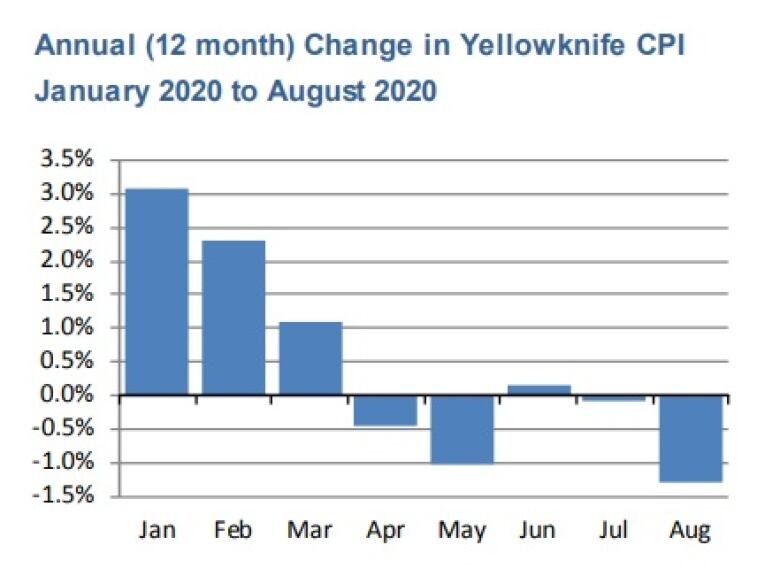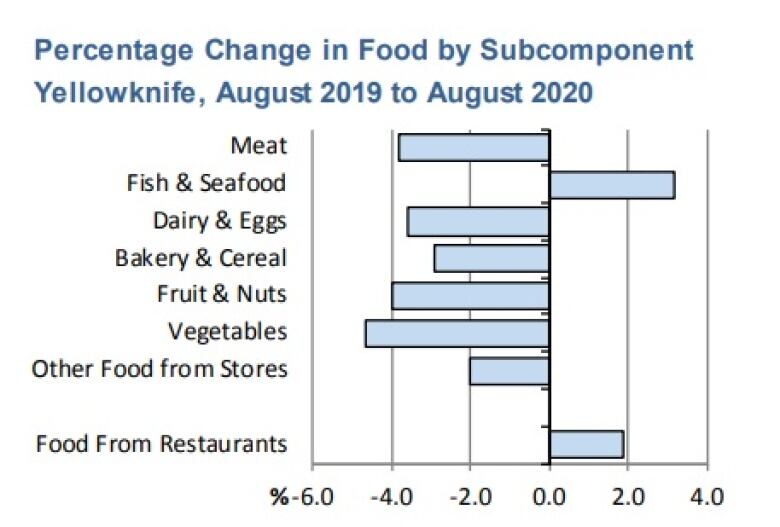Yellowknife sees largest year-over-year drop in consumer prices on record
Consumer prices fell by 1.3% since last August, the biggest drop since record keeping started in 1983

If you live in Yellowknife and you think you've noticed a drop in your grocery or fuel bills, you're not imagining things.
Recent data released by Statistics Canada shows that the territorial capital saw a 1.3 per cent drop in its consumer price index since August of last year. The index measures the relative price of goods compared to a different point in time.
The yearly drop is the largest on recorddating back to 1983, said Jeff Barichello, an economic statistician with the N.W.T. Bureau of Statistics.
However, that isn't what first caught his attention.
"What was really interesting to me isn't just the sheer size of the drop ... what's more interesting is really the trend over the last few months," he said.
"We haven't seen multiple declines in a year since 2009, when there was the financial crisis."
Prices declined by 1.2 per cent from July to August, marking the fourth consecutive month with no substantial gain.

Food and fuel main drivers
Though prices in Yellowknife appear to have declined for most goods, there are two major drivers of the decline: food and energy projects.
Food from grocery stores dropped by three per cent from last year and not just in one aisle.
"Meat, dairy, eggs, the bakery products, fruits, vegetables. They've all declined," Barichello said.
Energy products declined even more severely, due to the global plunge in oil prices since last year. Fuel oil and other fuels saw a 21.4 per cent decline from last year, while gasoline prices dropped by 11.4 per cent.
Barichello said that while food and fuel prices tend to bevolatile, the fact that they have seen downward trends over several months could point to something more substantial.

Though he couldn't pinpoint the COVID-19 pandemic as a factor for the price decline, he said that the timing could indicate a connection.
"It seems pretty coincidental that since March, from April onwards, we haven't seen any inflation pressure whatsoever," he said.
Historically, falling consumer price index numbers have been seen as a sign of economic trouble something being felt across the world as economies grapple with the impacts of the pandemic.
Barichellosays that the N.W.T.'s numbers aren't unique there was a 2.3 per cent drop in Iqaluit over the same time frame, a0.9 per cent drop in Whitehorse and asmall gain of 0.1 per cent across Canada as a whole.
However, depending on what happens for the rest of the year,he says that the numbers are starting to paint a troubling picture.
"When I see very low inflation for the last four months, if that carries on ... when you look at the data for the year and the inflation rate is very low, that starts to tell us something. But I have no idea what's going to happen next month."












_(720p).jpg)


 OFFICIAL HD MUSIC VIDEO.jpg)
.jpg)



























































































